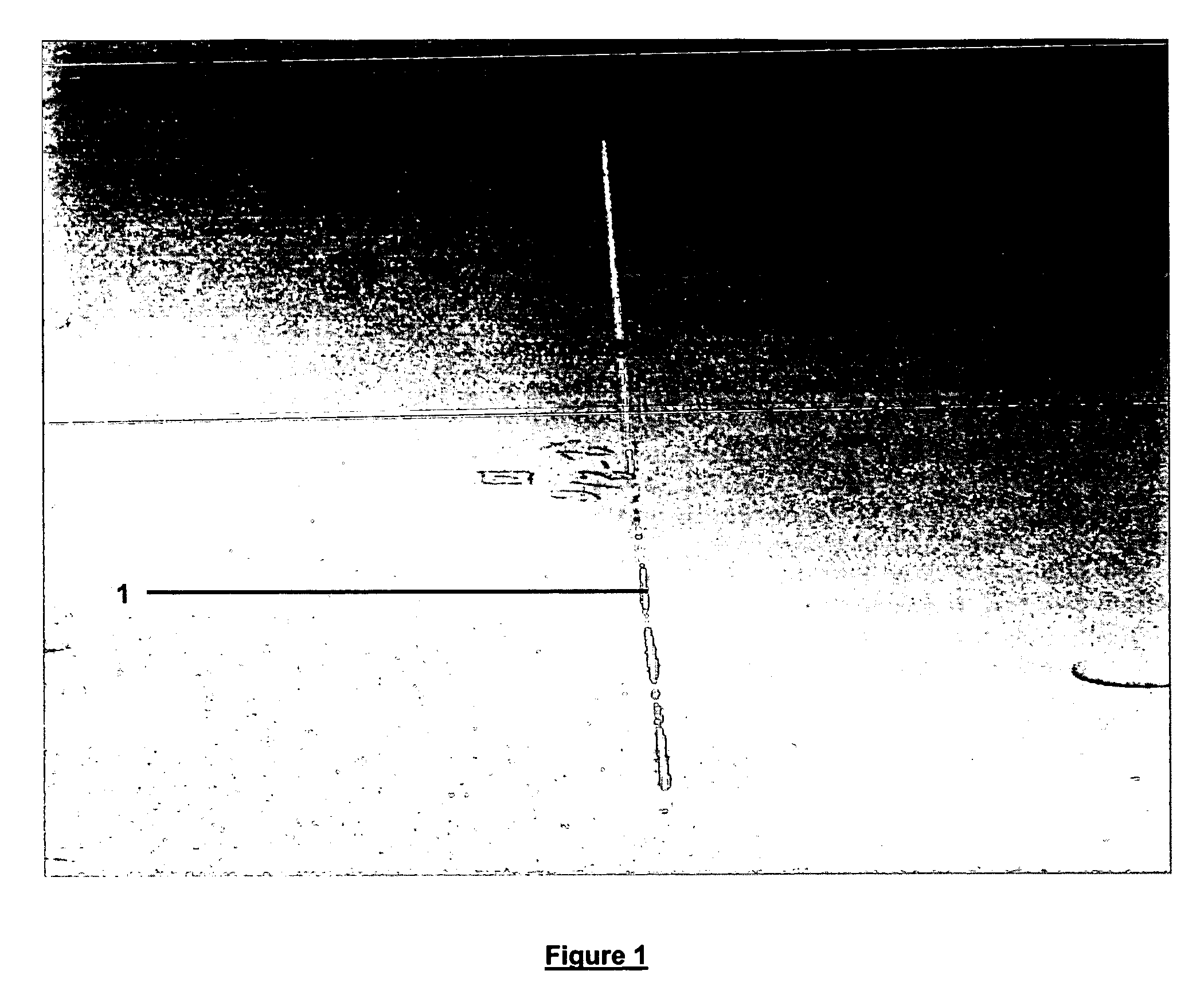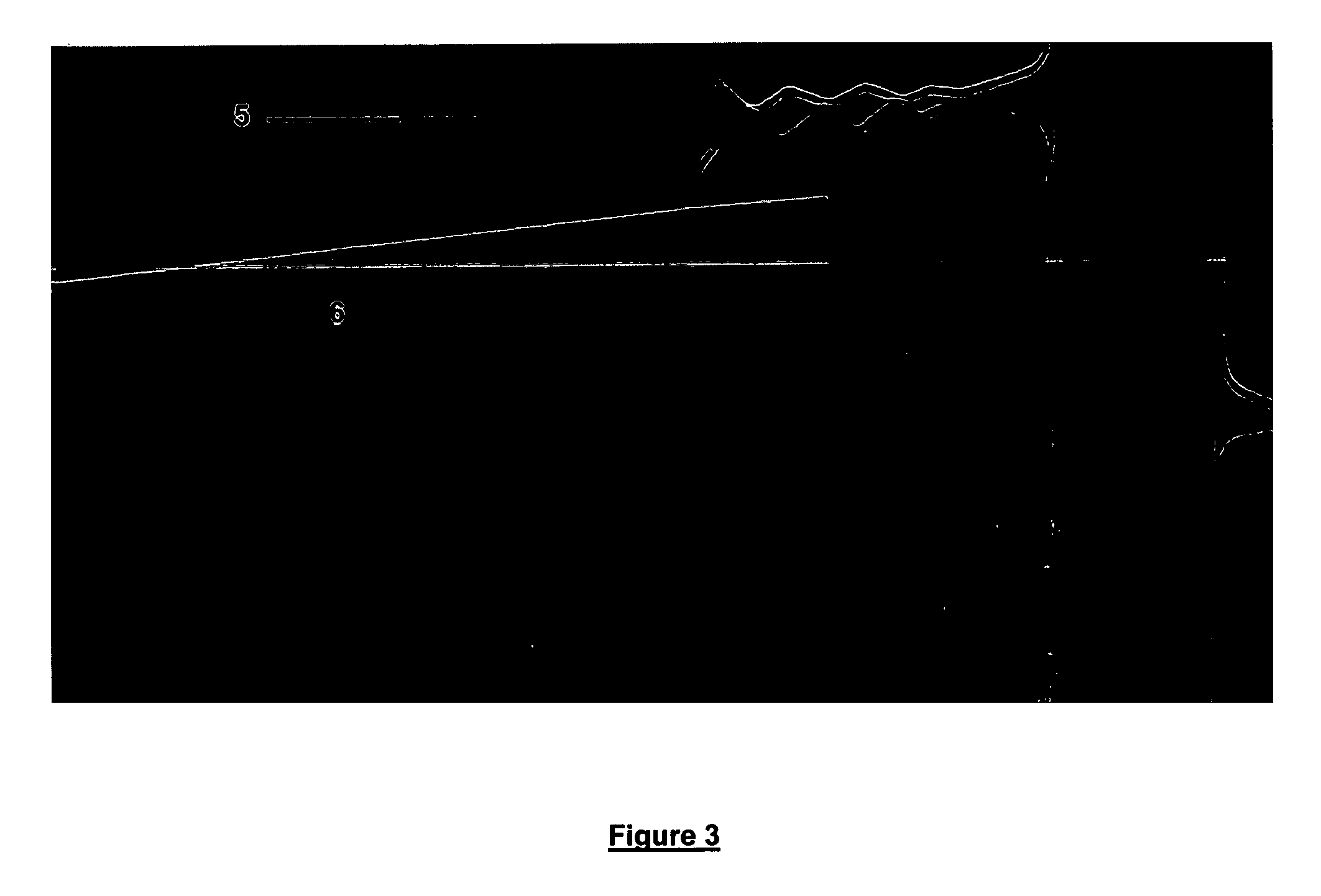Process for anodically coating aluminum and/or titanium with ceramic oxides
a ceramic oxide and anodizing technology, applied in the direction of electrolytic organic material coating, coating, transportation and packaging, etc., can solve the problems of coatings that lack one or more of smoothness, durability, etc., and achieve the desired degree of flexibility, hardness, durability, and adheren
- Summary
- Abstract
- Description
- Claims
- Application Information
AI Technical Summary
Benefits of technology
Problems solved by technology
Method used
Image
Examples
example 1
[0067]An aluminum alloy substrate in the shape of a cookware pan was the test article for Example 1. The article was cleaned in a diluted solution of PARCO Cleaner 305, an alkaline cleaner and an alkaline etch cleaner, such as Aluminum Etchant 34, both commercially available from Henkel Corporation. The aluminum alloy article was then desmutted in SC592, an iron based acidic deoxidizer commercially available from Henkel Corporation.
[0068]The aluminum alloy article was then coated, using an anodizing solution prepared using the following components:
[0069]
H2TiF612.0 g / LH3PO4 3.0 g / L
[0070]The pH was adjusted to 2.1 using ammonia. The aluminum-containing article was subjected to anodization for 6 minutes in the anodizing solution using pulsed direct current having a peak ceiling voltage of 500 volts (approximate average voltage=135 volts). The “on” time was 10 milliseconds, the “off” time was 30 milliseconds (with the “off” or baseline voltage being 0% of the peak ceiling voltage). A un...
example 2
[0071]A test panel of 400 series aluminum alloy was treated according to the procedure of Example 1. A scribe line was scratched in the test panel down to bare metal and subjected to the following testing: 1000 hours of salt fog according to ASTM B-117-03. The test panel showed no signs of corrosion along the scribe line, see FIG. 1.
example 3
[0072]A section of an aluminum alloy wheel, having no protective coating, was the test article for Example 3. The test article was treated as in Example 1, except that the anodizing treatment was as follows:
[0073]The aluminum alloy article was coated, using an anodizing solution prepared using the following components:
[0074]
H2TiF6 (60%)20.0 g / LH3PO4 4.0 g / L
[0075]The pH was adjusted to 2.2 using aqueous ammonia. The article was subjected to anodization for 3 minutes in the anodizing solution using pulsed direct current having a peak ceiling voltage of 450 volts. (approximate average voltage=130 volts) at 90° F. The “on” time was 10 milliseconds, the “off” time was 30 milliseconds (with the “off” or baseline voltage being 0% of the peak ceiling voltage). The average current density was 40 amps / ft2. A uniform coating, 8 microns in thickness, was formed on the surface of the aluminum alloy article. The article was analyzed using qualitative energy dispersive spectroscopy and found to h...
PUM
| Property | Measurement | Unit |
|---|---|---|
| average voltage | aaaaa | aaaaa |
| thickness | aaaaa | aaaaa |
| peak voltage | aaaaa | aaaaa |
Abstract
Description
Claims
Application Information
 Login to View More
Login to View More - R&D
- Intellectual Property
- Life Sciences
- Materials
- Tech Scout
- Unparalleled Data Quality
- Higher Quality Content
- 60% Fewer Hallucinations
Browse by: Latest US Patents, China's latest patents, Technical Efficacy Thesaurus, Application Domain, Technology Topic, Popular Technical Reports.
© 2025 PatSnap. All rights reserved.Legal|Privacy policy|Modern Slavery Act Transparency Statement|Sitemap|About US| Contact US: help@patsnap.com



